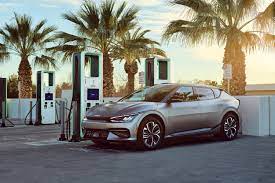
carbon
Humanity’s contemporary equivalent of the race to the moon is the race to achieve net-zero carbon emissions. While global pacts such as the Paris Agreement have set ambitious goals, progress is hindered by regional disparities, climate extremes, political restrictions, and systemic inefficiencies. There would be no success with a “one-size-fits-all” approach to reaching net zero. Instead, it must recognize that every location requires a unique strategy. We may develop an effective strategy to achieve net zero by looking at the globe through the compass of North, South, East, and West.
North: Tundra-Friendly Technology
The Arctic and sub-Arctic regions, which constitute the majority of the North, pose unique challenges to achieving net zero. Besides this, regenerative agriculture or other nature-based alternatives are just not practical given the unforgiving climate and ultra-short growing seasons. The permafrost simply thaws with rising temperatures, releasing potent greenhouse gasses, including methane, further exacerbating climate change in a vicious circle. Setting up shop in the North is extremely resource-intensive: heating, transportation, and energy in remote regions require copious amounts of fossil fuels.
Current strategies are not able to respond to the challenges of distance and cold. Because of insufficient infrastructure, electrification is difficult in these areas; batteries’ performance drastically deteriorates in cold weather, decreasing the value of electric vehicles.
The North must turn to technological innovation to overcome these obstacles. For instance, Iceland’s use of geothermal energy as its primary energy source has advanced remarkably. Geothermal energy provides 62% of Iceland’s energy supply, and 39.2% of geothermal energy use is generated from geothermal sources. At 44.6% of total geothermal utilization, space heating is the largest geothermal use sector (Ragnarsson).
Geothermal energy results in fewer greenhouse gasses than burning fossil fuels to generate energy. Geothermal energy is considered one of the lowest carbon footprint energy sources, even after accounting for the cost of building and maintaining geothermal plants. For the colder parts of the world, geothermal energy can replace carbon-intensive heating systems that rely on coal or oil. Not only that, geothermal energy is a very reliable round-the-year source of energy independent of the weather. Stability with regard to geothermal energy is very important in the process of reducing dependence on fossil fuels for these cold regions.
South: Cost-Effective Solutions, Yet Practical
The South is vulnerable to both changing climates and economic disparity. Countries in the Global South contribute the least to climate change but suffer its worst impacts, from rising sea levels to desertification in Sub-Saharan Africa. Current global strategies often overlook these inequities, only focusing on solutions that are financially inaccessible or poorly adapted to local conditions.
Currently, renewable energy programs in the Global South usually face insufficient funding, and international climate finance falls short of expected levels. Furthermore, the emphasis on advanced technologies such as carbon capture and electric vehicles ignores the realities of limited infrastructure and resources in the South.
In this regard, the South should stress democratic and locally sustainable solutions. Solar microgrids are localized renewable energy systems designed for remote communities. These systems provide reliable electricity without the massive infrastructure and significant costs associated with centralized grids, making them an ideal choice for the Global South.
For example, in a study across 22 villages in India revealed that the villagers were nearly twice as much satisfied with microgrid reliability compared to the main grid, even though the microgrids provided fewer hours of electricity (Graber, et al.). That shows that the reliability of the power source is considered first before the quantity of energy generated for the underprivileged communities. Solar microgrids will not depend on fossil fuels like diesel generators, so the quality of air will improve, reducing the amount of greenhouse gases in the air.
Besides giving access to energy, microgrids also bring opportunities for enterprise and education to rural communities. Students can study at night and local companies can prosper when there is greater access to dependable energy, which promotes sustainable development. In essence, such perks make solar microgrids a powerful tool for addressing energy poverty while advancing the global net-zero agenda.
East: Bamboo as a Solution
The East is home to abundant bamboo resources, spanning across China, India, Vietnam, and Southeast Asia. Bamboo offers immense potential to achieve net zero in the East as a rapidly growing material with high carbon sequestration capabilities.
For instance, Bamboo Fiber-Reinforced Polymer Composites (BFRPCs) are growing into one of the most promising innovations in sustainable manufacturing, especially for the East with abundant bamboo resources. By combining bamboo fibers, one of the most renewable natural resources, with synthetic polymers, BFRPCs offer a combination of high performance, sustainability, and environmental responsibility (Nirmal, et al.).
BFRPCs demonstrate significant potential in achieving net zero emissions, as they offer sustainable alternatives to conventional materials. In one example, a study by Sanjita Watsi, a postdoctoral research associate at Oak Ridge National Laboratory, bamboo thermoplastic composites showed 17% higher flexibility, 10% lighter, and 98% higher modulus compared to traditional Apitong wood for trailer decking (Sanjita, et al.). This study highlights the mechanical properties of bamboo fiber composites and their comparative advantage over conventional materials like Apitong wood, which contributes to deforestation.
This makes BFRPC an ideal candidate for applications in the automotive manufacturing sector, where performance and efficiency are critical. In another instance, bamboo fiber composites are being developed to be used in food packaging, which takes advantage of their high biodegradability and strength (Xu, et al.). This example underscores the versatility of this material, since it combines biodegradability with strength, thereby addressing both environmental concerns and the growing demand for sustainable packaging. By integrating BFRPCs with automotive and packaging, the East can reduce its carbon footprint, and ultimately contribute to achieving global net zero emissions.
To admit, challenges do exist when using bamboo as a manufacturing material. First, the material’s properties can vary significantly by species and age, which could possibly lead to increased production costs for producers. Also, the material must be processed carefully using different methods for different species to maintain their fiber integrity (Xu, et al.). However, the continuous improvements in material science and manufacturing technologies are increasingly overcoming these challenges. The long-term environmental benefits far outweigh the initial burden on the producers given bamboo’s rapid growth and its versatility across industries.
West: A Sustainable Future with Sustainable Housing
Many people consider the West, which includes a large portion of the developed world, to be the leader of climate action. In terms of emissions reduction and renewable energy, nations like the US, Sweden, and Germany have achieved notable progress. However, unsustainable consumption behaviors hinder these attempts. Western countries contribute disproportionately to emissions due to their high per capita energy use and waste, even though they make up a smaller fraction of the world’s population.
In the West, current approaches frequently concentrate on technology solutions, like carbon capture and electric cars, while ignoring the systemic and cultural changes required to solve overconsumption. Furthermore, Western nations’ international assistance usually falls short of what is needed to help the Global South make the transition to net-zero.
Hence, people in the West could live in sustainable homes built from unneeded and out-of-use materials because this would maximize the usage of resources and minimize excessive possessions. One way this project is done is by converting unused shipping containers into valuable shelters. There are 17 million shipping containers around the world, yet 11 million of them are vacant, simply consuming volume and space on our planet. Carbon footprint is an indicator that speaks for an object’s impact on the environment.
According to Stephen Bender, a professor at the University of Florida Graduate School of Architecture, shipping container houses reduce carbon footprint by upcycling and reducing the use of dimensional lumber (Blanford). An empty shipping container would produce approximately 6.66 metric tons of CO2, which is only 8% of the carbon footprint produced when building a brand-new two-story house (Doedee; Berners-Lee). Therefore, sustainable housing could save our world by reducing 86.6 metric tons of CO2 by making use of the vacant containers that would otherwise be filling up the atmosphere with carbon dioxide.
Conclusion
Technological solutions and ambitious objectives are not enough to reach net-zero emissions. Regional awareness, customized solutions, and international cooperation are all factors that are vital for our race to global net zero. We can turn current challenges into new possibilities by focusing on the different issues faced by the North, South, East, and West.
By: Gyumin Kim
Write and Win: Participate in Creative writing Contest & International Essay Contest and win fabulous prizes.


